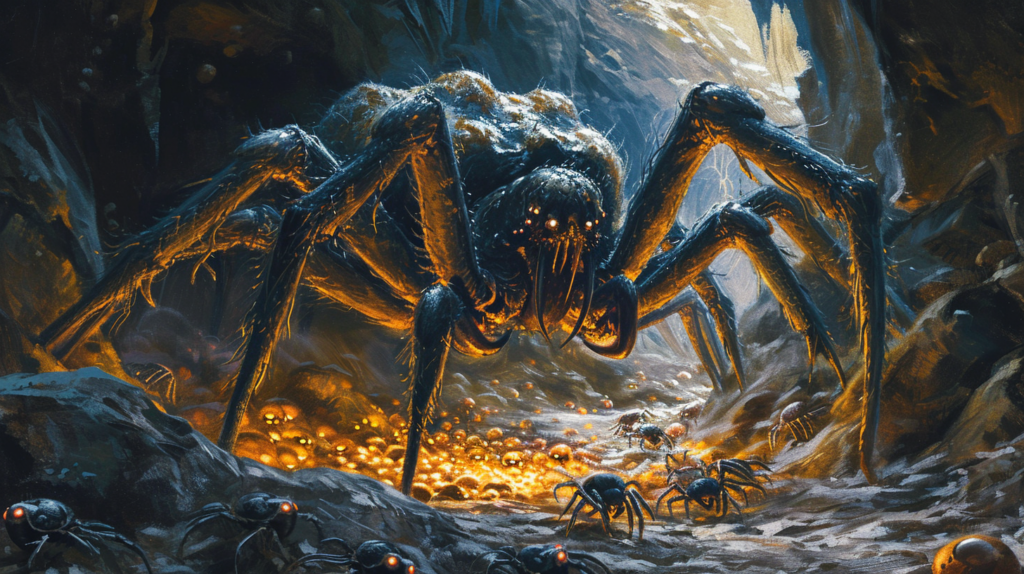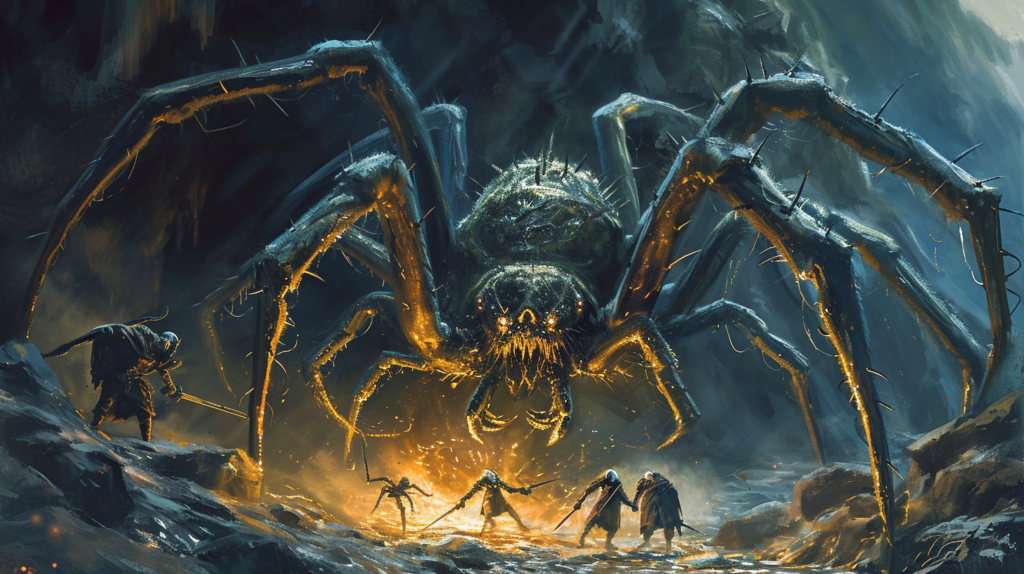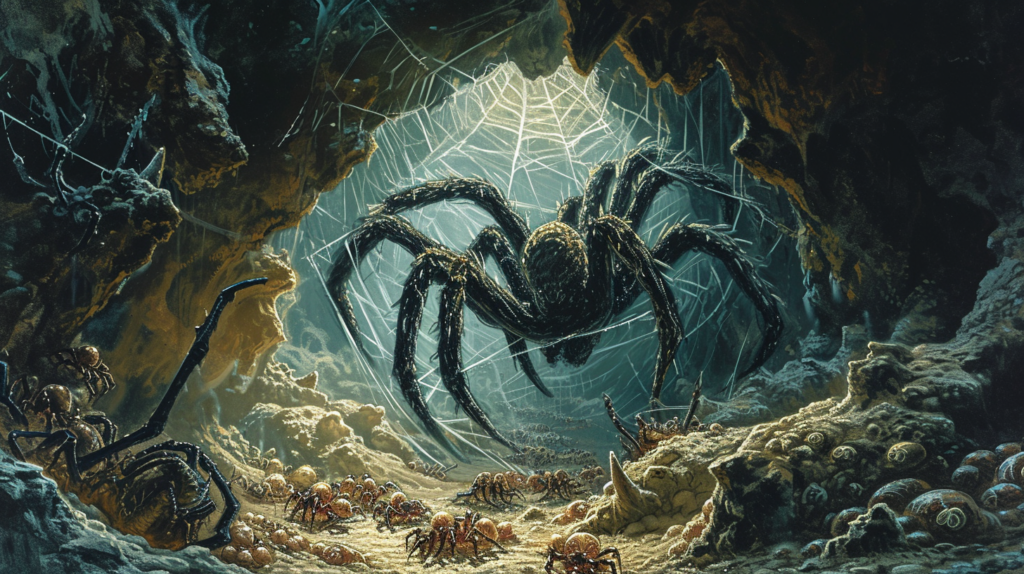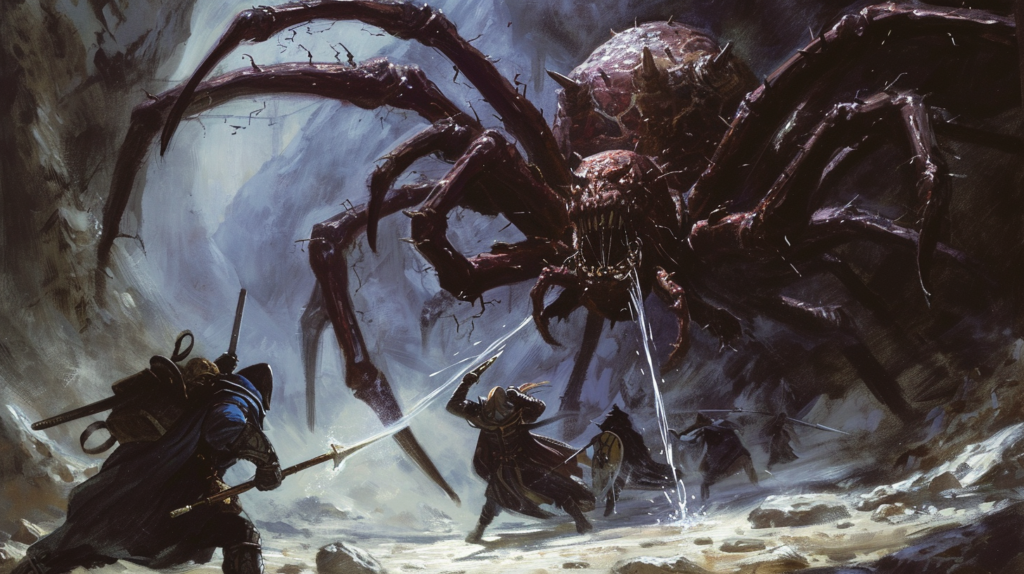YouTuber and game designer Matt Colville has created one of the best D&D homebrew rules: Action Oriented Monsters. The main idea is to create a simplified system of monster creation that will fit your intention. Simply put: we want our boss encounters to be awesome and memorable, but we don’t want it to be complex. Action Oriented Monsters takes care of this. It helps you create monsters with a narrative and a cool move set.
Action Oriented Monsters: Themes and Actions
There are several issues that this homebrew tackles. In his video, Matt creates two examples and alters their stats a little since he wants to turn these monsters into stronger versions. The goblin becomes a goblin boss, and the ankheg becomes a stronger version. There are no set rules for this, so you will have to decide these alterations on your own. Or use Zee Bashew’s rules for making monsters more ‘Witchery’, like I do.
Other than some stat alterations, there are two important parts to creating Action Oriented Monsters. ‘Theme’ and ‘actions’. The theme is the creative part that you have to figure out. Whatever monsters you’re thinking of, try to make everything it does as consistent as possible. For example: we’re creating a spider-like monster, a Queen Spider within a lair. Spiders use webbing, they can be poisonous, they can crawl along walls and ceilings, and a female spider lays eggs. All of these elements are consistent with the theme ‘spider’, so let’s use them.

The other part, ‘actions’, involves all possible actions. We will use all the creative elements to not only create the regular actions, but we will also create bonus actions, reactions, and another type of action: Villain Action. That last type of action is the most defining part of this method, in my opinion. They replace Legendary Actions and work a bit differently.
Villain Actions
Instead of having Legendary Actions, give your monsters Villain Actions. Like Legendary Actions, the monster can perform these out of turn, for example at the top or at the end of the round. And each villain action should be a ‘step up’ or perhaps even a direct follow-up from the previous one. This means you will create a specific Villain Action for round 1, round 2, and round 3 (or more). And that is how a narrative is formed.
Let’s continue with the spider we were creating. The spider is a mother with eggs and we want her to have the ability to summon spider minions each round (with a Bonus Action for example). Her first villain action however, is summoning three spider minions, forcing the players to deal with a pack of minions at the start of the battle. Her second villain is shooting webbing over the battlefield that makes it harder for the players to move, but easier for the spiders. And her third action is a poison spray that not only damages and poisons its target, it also attracts extra spider minions.

Do you see how those Villain Actions ratchet up the tension? First we create extra spider minions (on top of the existing ability to summon spiders). Then we alter the battlefield in favor of those spiders. Finally, we spray an ultimate attack that damages and summons spiders. And all of it fits within the theme.
Actions
The regular actions should also fit with the narrative and type of monster you’re creating. Anything related to webbing, poison, biting, using its legs, or anything else you can think of. I don’t want the regular actions to overlap with the Villain Actions too much though, so let’s make them melee attacks. But we still want to flavor them appropriately. So we will allow the spider to make four(!) melee attacks.
Just think of a spider, rearing back, using four of its legs trying to pierce a target. At the table, when the spider is about to perform this action, describe it as such! “You see the enormous spider rearing back, and four of its legs are frantically flailing about, preparing to attack.” Now you’ll have the players asking “wait, four attacks?!”
Bonus Actions
We want the players to feel like heroes overcoming a horde of creepy spiders. So let’s give the Spider Queen the ability to summon two spider minions each turn, with her Bonus Action. FYI: a minion is a monster with 1HP, or at least a monster that goes down with one hit. Another possibility is to give the Spider Queen the ability to shoot targeted webbing with her Bonus Action, to restrain players (after a Saving Throw). Or both.

I use Bonus Actions to balance the so-called action economy, allowing the monster to (potentially) slow down the number of attacks from the players. If all players focus on a boss with the correct type of attack, they can easily destroy it. So adding minions or obstructing the players in their actions is a great way of slowing down the incoming damage.
Reactions
Finally, Reactions are there to disturb the regular flow of battle. Something happens and you basically get to say “hold up, not so fast.” For example: a necromancer could use a reaction to revive a fallow comrade. A gelatinous cube could use a reaction to absorb a weapon when it’s hit. Simply put: with Reactions I try to create annoyances for the players. Whenever they think they’re making progress, a Reaction should say “yes, but…”
In the case of the Spider Queen, we could use the element of webbing. Whenever a player moves through webbing, the Spider Queen gets an attack of opportunity, because she can sense where they are. Perhaps we can use the webbing for ranged attacks: whenever a ranged attack is made by a player in webbing, the Spider Queen gets to use Uncanny Dodge. Or when a player tries to melee attack the Spider Queen but misses, she gets a reaction ‘webbing shot’. If you have creative ideas to annoy players, this is the time to unleash those.

Action Oriented Monsters: Summary
To summarize: think about the monster you’re creating/adapting and list the elements to create a theme. Then create all types of actions according to that theme. The Villain Actions are there to form the backbone of the encounter, the main narrative that builds up to a highpoint. The regular actions should fit the theme, but try not to steal the thunder of the Villain Actions by overlapping too much.
Bonus Actions are a good way of controlling the action economy. The easiest ways to accomplish this is by adding monsters to the battlefield, or by applying conditions to the players. Reactions should function as a way of interrupting the expected flow by reacting to something that happens to the monster or someone else. One common type of Reaction is ‘a player attacks the monster and now the monster does X in return’. But there are other possibilities.
Why I love Action Oriented Monsters
Matt Colville’s system is honestly one of the best homebrew creations for D&D 5e out there. It truly helps the player to create better boss monsters by forming a narrative and sticking to a theme. Although it’s a little more loose than Zee Bashew’s Rules for Making Monsters Witchery, it absolutely does what it’s supposed to do: it helps making and running monsters easier.

